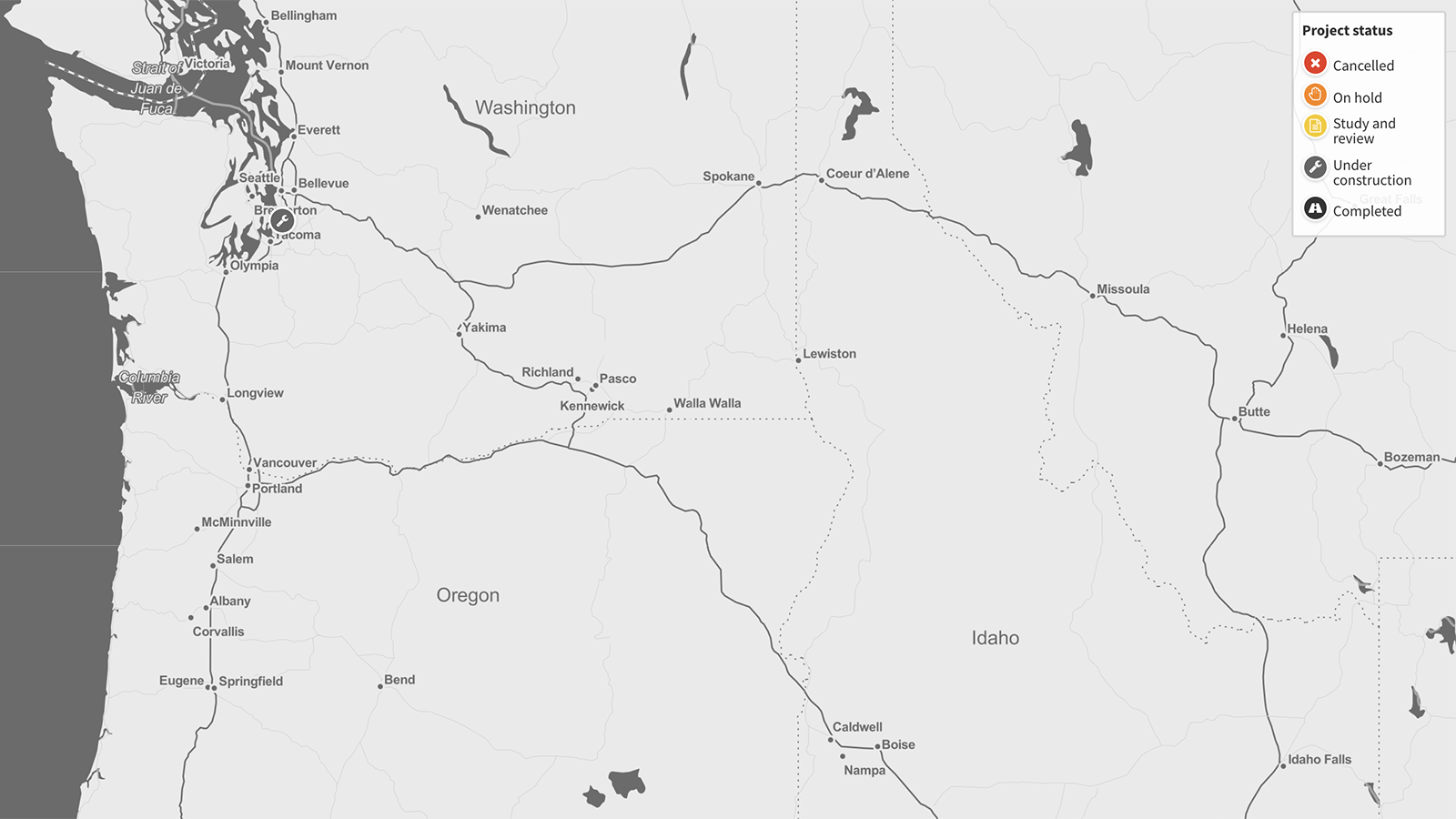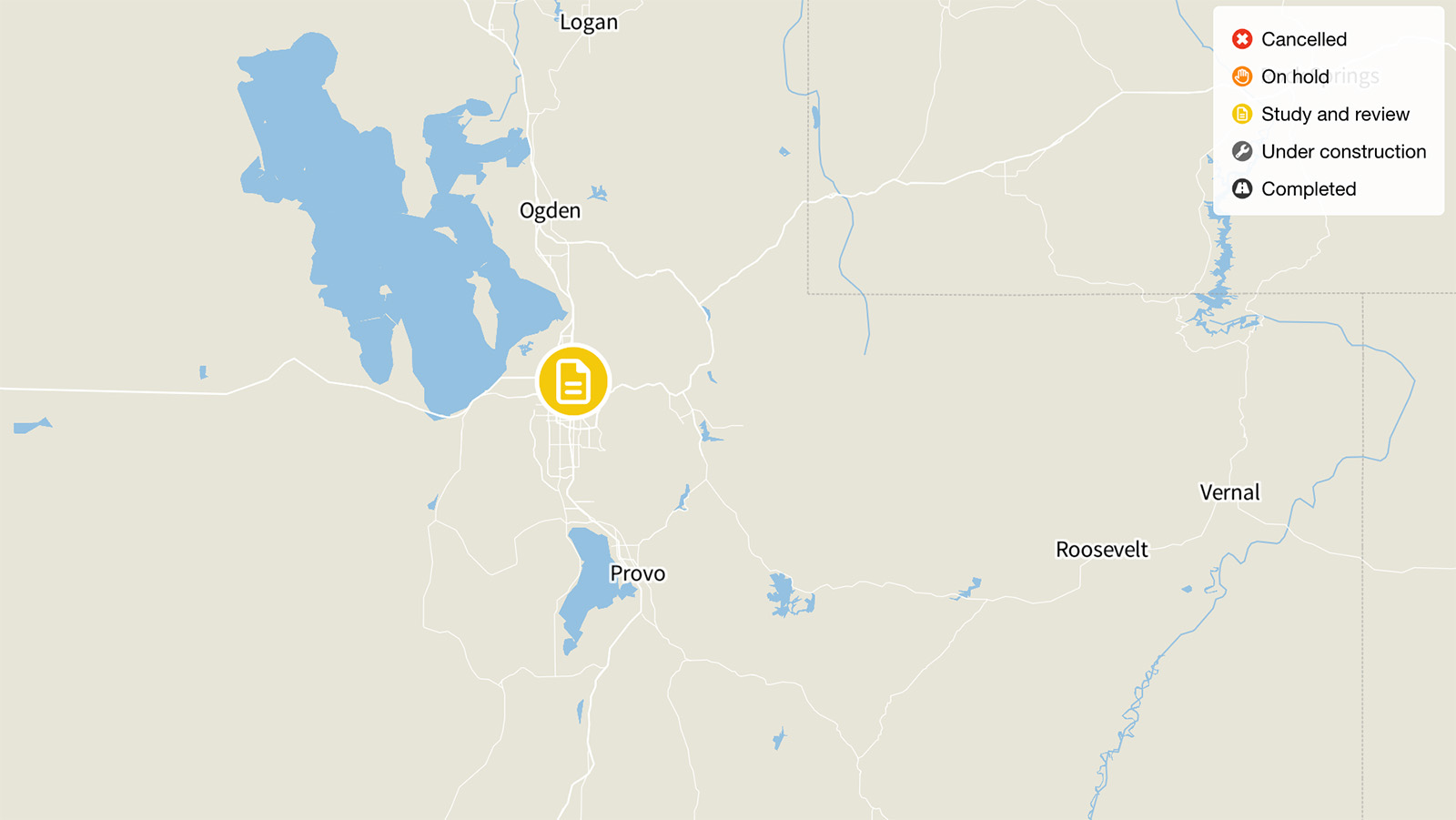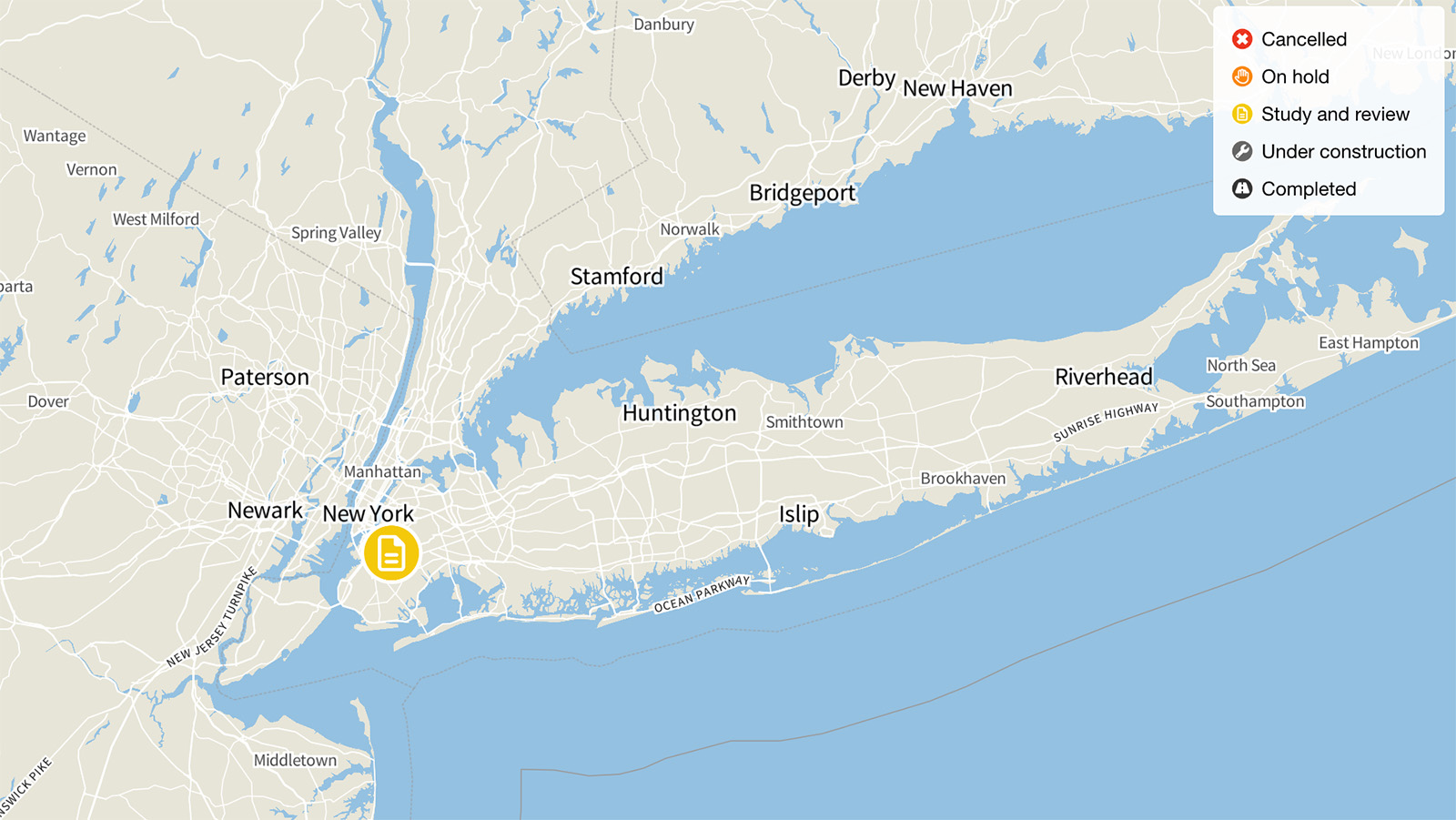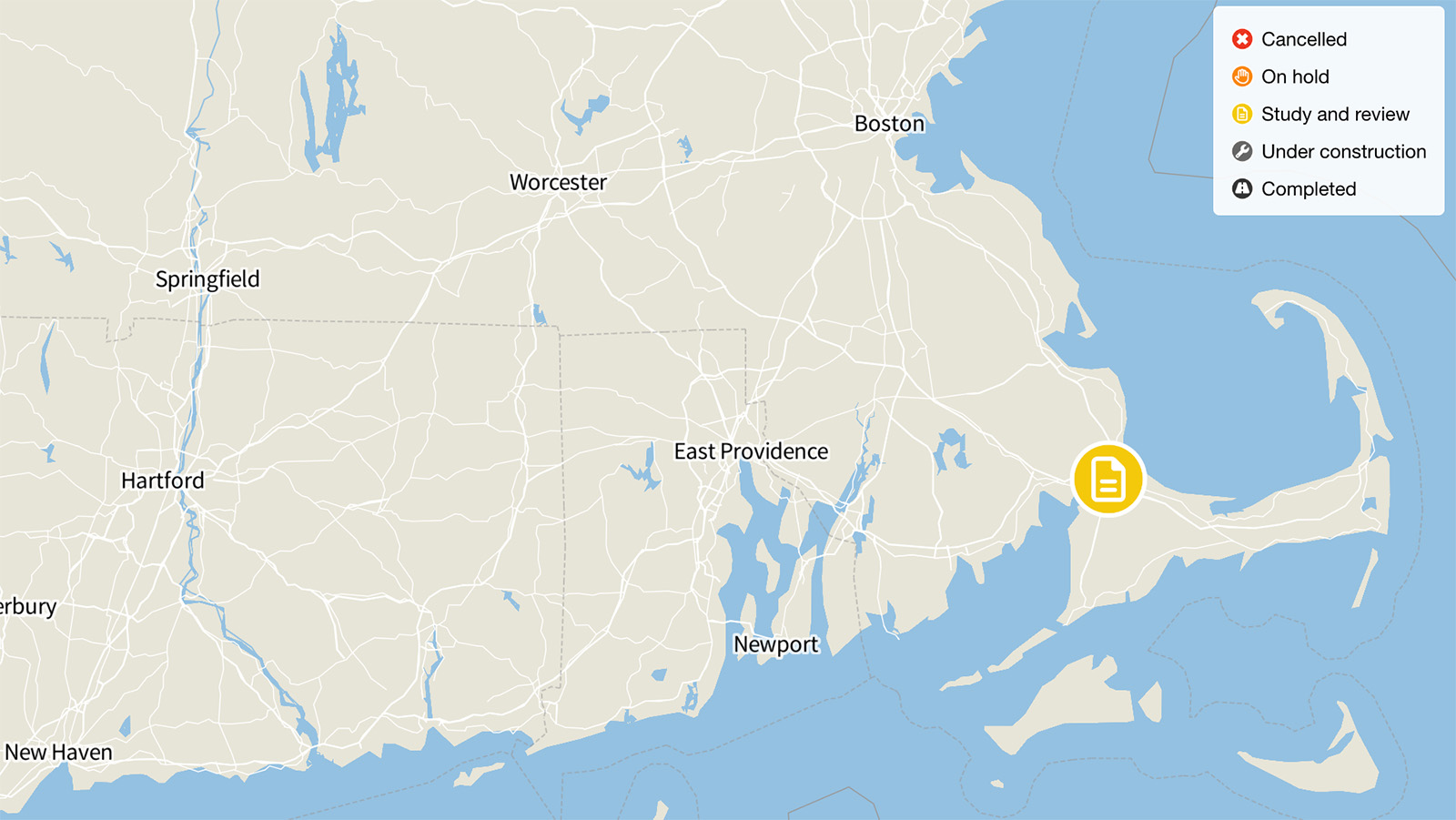
Puget Sound Gateway, Washington
Washington state is proposing to spend billions of dollars on a highway to relieve congestion in a way that will not do so, in an area where traffic has not grown for more than a decade, and where other pressing needs for transportation funding exist.

Status: Under construction
Originally reported cost: $3.1 billion
Update for current status:
As of September 2023, the Puget Sound Gateway project was under construction.
Update from Highway Boondoggles 4, 2018:
The Puget Sound Gateway is a $2.8 billion to $3.1 billion project between Seattle and Tacoma, expanding State Route 167 between Tacoma and Puyallup by two lanes and State Route 509 from Kent to Burien by two lanes as well as converting the existing HOV lane to an express lane on Interstate 5 between the ports of Tacoma and Seattle. Evaluations of toll revenue potential for the project estimate that tolls would only contribute about $330 million toward the total project cost between 2021 and 2060. Even after passage of a $16 billion statewide transportation package in 2015, which included funds for the project, additional funds are still needed to build portions of the project.
As of February 2018, the Washington Department of Transportation was reevaluating the project through its “Practical Solutions Process,” which includes reengaging stakeholders, in order to make sure the resulting design addresses real needs.
Original story from Highway Boondoggles 2, 2016:
The state is proposing to spend billions of dollars on a highway to relieve congestion in a way that will not do so, in an area where traffic has not grown for more than a decade, and where other pressing needs for transportation funding exist.
The Washington Department of Transportation (WSDOT) has proposed construction of a $2.8 billion to $3.1 billion project between Seattle and Tacoma: expanding State Route 167 between Tacoma and Puyallup by two lanes and State Route 509 from Kent to Burien by two lanes. Also proposed is adding two new express lanes to Interstate 5 between the ports of Tacoma and Seattle, which could be used by drivers willing to pay for an expedited trip through the new lanes.
Toll revenue would only contribute $330 million toward the total cost of the project from the time it is completed in 2021 until 2060. WSDOT has already warned that more than a billion dollars in additional state borrowing will likely be needed to cover the project’s costs.
Justification for the project relies on claims by WSDOT that expanding routes 167 and 509 will bolster Washington’s export economy by increasing the ease and efficiency of the transport of commercial goods along the routes and to the ports.
WSDOT also claims the project would reduce congestion through the region. But the state’s own data show that building the project would substantially increase traffic on I-5, inducing cars and trucks to drive nearly 2 million more miles a year on the highway by 2030, and drivers to spend more than 25,000 hours behind the wheel on I-5 in that year than if the project was not built.
In addition, traffic on routes 167 and 509 remained stagnant between 2003 and 2014. During that same period, I-5 saw as many locations with stagnant or decreasing traffic as with increasing traffic.
WSDOT is an agency with a long history of very costly, often unnecessary, highway construction projects. Other project supporters include real-estate developers hoping the expanded road will encourage sprawl, including in a 4,000-acre, 5,900-suburban home development under way in the region.
Properly directed investment in Washington’s transportation system is badly needed, and the billions being proposed for the Puget Sound Gateway would find very productive uses if they were available for other purposes instead.
For example, to fully replace all of the structurally deficient bridges in Washington would cost $1.2 billion – far less than the Gateway project. Repairing them to good condition without rebuilding them would cost $847 million.
The Gateway funding – or even what is left of it after fixing all of the state’s structurally deficient bridges – could also provide a significant boost to transit service in the Puget Sound region. The local transit agency, Sound Transit, is developing a $15 billion proposal that, if approved by voters in 2016, would increase local taxes to pay for significant investment in the Puget Sound regional transit system.
Adding state and federal funds from the Gateway project could either allow additional service improvements or relieve pressure on local taxpayers.

Topics
Find Out More


I-15 Expansion, Salt Lake City

The Brooklyn-Queens Expressway, New York


